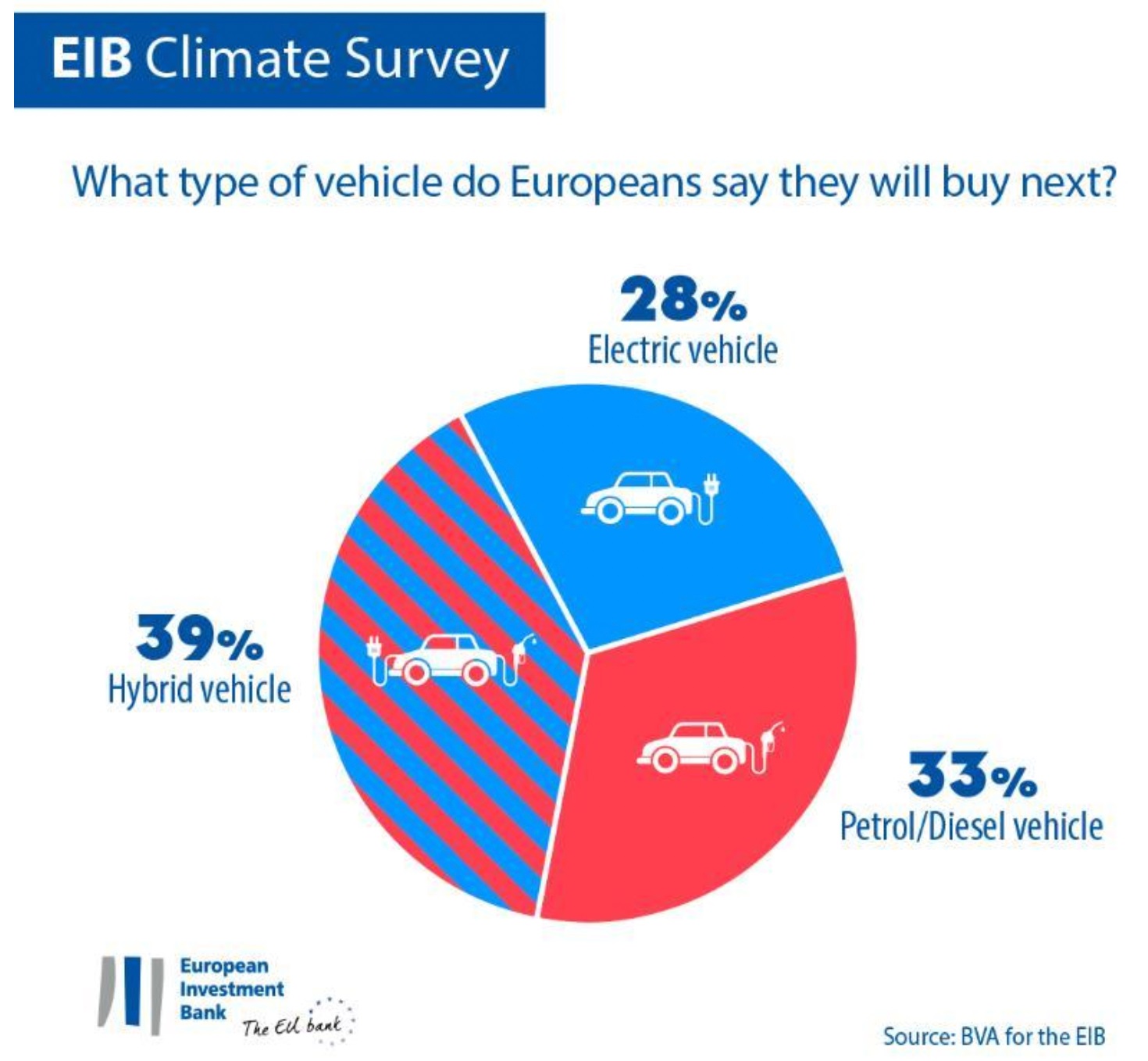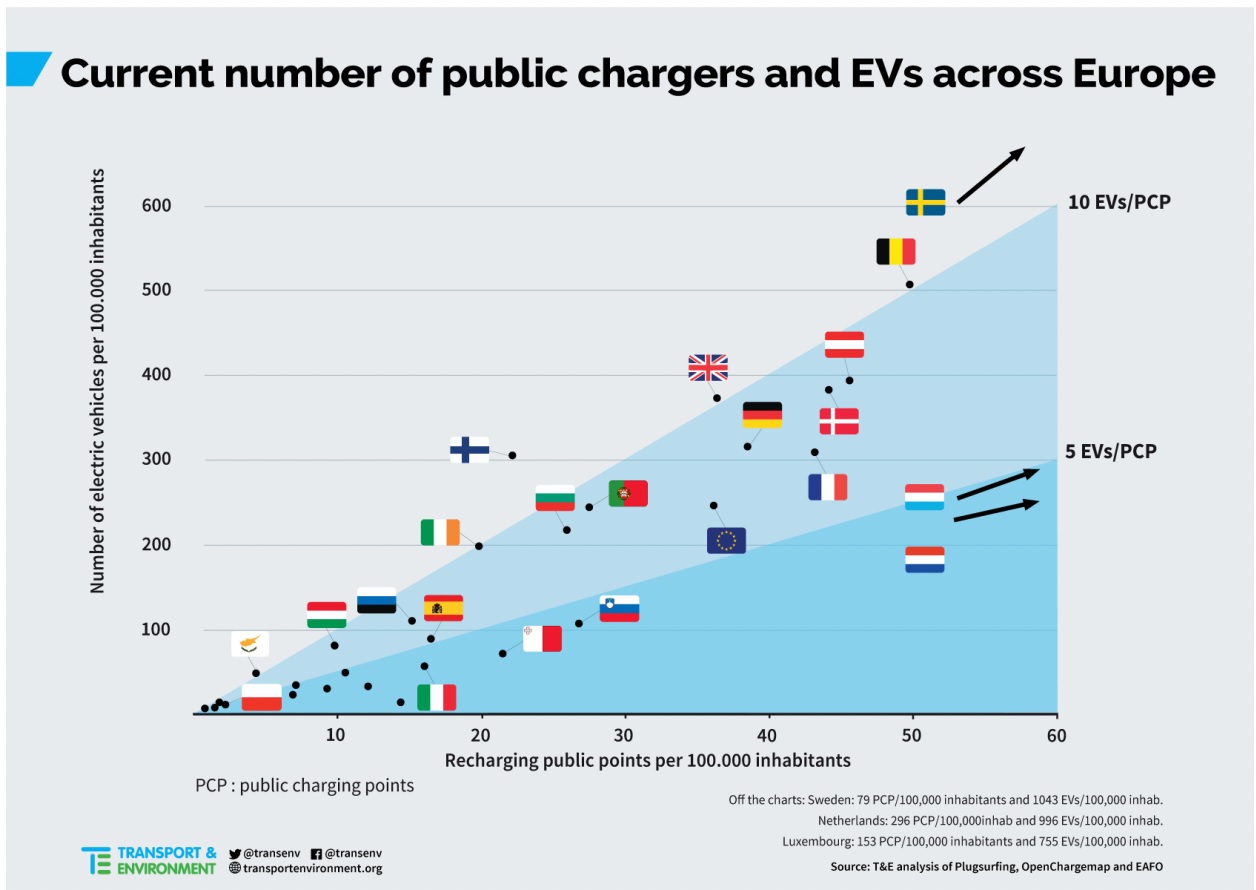The transition from traditional internal combustion vehicles to electric vehicles (EVs) is generally considered to be one of the most important targets for reducing carbon emissions.
In 2020, internal combustion engines were responsible for about a fifth of Europe’s carbon emissions. Not surprisingly, the EU is working for change sooner rather than later, with the aim of reducing road transport emissions by 90% by 2050.
Although ambitious, this seems to be an achievable goal. In a recent survey by the European Investment Bank, more than two-thirds of Europeans say they will opt for a hybrid or electric vehicle for their next car. This is great, obviously, but all these cars will have to be loaded somewhere.
Currently, the main concerns for people considering purchasing an electric vehicle are still the lack of (fast) charging infrastructure and the anxiety of autonomy.
These are legitimate concerns, as access to public charging infrastructure across Europe remains severely decommissioned. Only three European countries – Germany, the Netherlands and France – account for 70% of public charging points across the Union.
What Europe wants
According to a 2021 EU report on charging infrastructure, “the ultimate goal of the policy is to make charging electric vehicles as easy as filling a conventional vehicle tank so that electric vehicles can travel easily across the EU.” .
The same report states that Europe’s Sustainable and Smart Mobility Strategy has identified the need for 3 million public charging points by 2030, with 1 million installed by 2025. This comes down to around 3,000 public charging points each week by then this too could be a great understatement.
McKinsey’s cross-sectoral research for the European Automobile Manufacturers Association (ACEA) found that 6.8 million public charging points will need to be installed by 2030 to achieve the desired 55% reduction in CO2 emissions from vehicles. According to their calculations, “up to 14,000 public charging points should be installed for all vehicle segments across the EU each week – compared to less than 2,000 per week at present”.
The EU report notes that achieving this electric utopia is a problem. The construction of the charging infrastructure follows the sales of electric vehicles, and the sales of electric vehicles are slowed by the lack of charging infrastructure.
This is echoed by Aaron Fishbone, President of Communications at ChargeUP Europe, an industry group representing various stakeholders in the charging infrastructure industry.
A directive does not make legislation
Firstly, the launch of charging points is currently governed by a non-binding directive instead of an EU regulation – “and because it is a directive, each country can choose how it wants to do so, resulting in a chaotic approach”. says Fishbone.
The directive is currently being revised for the European Environment Pact, which would result in real European regulation for launch, but there are still a lot of issues to be addressed before this regulation is adopted.
The publicly accessible charging infrastructure is largely managed by private companies that build and maintain the chargers. Because there is no central planning, these companies must individually find new places for chargers, go through the permit application process, and then hope that network operators have time to set up new connections – a process that can take years and years. leads to rejection.
Bureaucracy slows down the launch unnecessarily, says Fishbone, even if network volume is not an issue.
Europe’s electricity producers say volume is not an issue. They expect 130 million electric vehicles by 2035 in Europe and that should be fine.
Loading frustrations
Ease of consumerism is another problem facing the industry due to lack of regulation. While the European directive has succeeded in establishing standardized ports of loading, the bigger question of interoperability is not the physical connection.
Different charging points require different apps or subscriptions to charge, and they don’t communicate with each other about things like charger availability and billing.
If you go from the south of Sweden to the north of Sweden, you have to download four different applications, ”says Anna Svensson, strategy and business developer at Polestar.
By providing Polestar drivers with a card that works with different charging operators, part of this problem is solved. But Svensson admits there is still a long way to go, largely because operators do not always exchange data.
Then you have the issue of availability and reliability of charging points. Once you get to such a point, two other important questions arise, are there many others waiting in line? Does the charging point really work?
But is it green?
It is important to note that not all charging points are created equal. Green electricity (produced with alternative energy) will have a much greater impact on reducing emissions than electricity produced from fossil fuels. Instead of working for more charging points, decision-makers need to work for more green energy options when building Europe’s charging infrastructure.
To raise awareness of this issue among both decision-makers and consumers in Polestar’s 2020 and 2021 life cycle assessment reports, the company has included research that demonstrates the cost of emissions of each vehicle. during production and use, depending on the type of energy used to charge the vehicle. As evidenced by their research, the use of clean wind energy to charge electric vehicles will lead to significantly lower emission costs.
The future of loading
One of the biggest problems at the moment is that Europe is not yet producing enough green energy to meet demand. But policymakers are discussing possible options.
For example, smart charging, in which charging is balanced based on network capacity, price and (clean) energy availability, is a possible option. But this still requires a lot of work on open standards and interoperability. Will mainly electric cars currently on the market be compatible with these systems? Polestar has put its Polestar 2 through an independent testing lab to make sure it is compatible with smart charging.
Another open standard that is being discussed is called Plug and Charge, which would eliminate many of the convenience issues for consumers. According to this standard, billing information would be stored in the vehicle itself, rather than in an application or on a key, and transmitted to the charging point when connected. Of course, this raises a number of privacy and security issues that still need to be properly addressed and standardized.
While it will take time to build the infrastructure and capture the energy needed to meet demand, there are a few things charging point operators can do now to provide more green energy options.
Some actively provide green energy by purchasing credits for renewable energy. Others, such as FastNed, have solar panels installed on charging stations to generate their own clean electricity.
We are still in the relatively early stages of the market, ”concludes Fishbone. “Electric cars are not yet a phenomenon on the mass market. The market is clearly moving in this direction and the change will take place. But we’re not there yet. “



 Renault’s compact family SUV will be called the Symbioz -.
Renault’s compact family SUV will be called the Symbioz -. Peugeot and its new range of salt and pepper mills -.
Peugeot and its new range of salt and pepper mills -. A new Uber Eats ad is being criticized for showing a peanut allergy -.
A new Uber Eats ad is being criticized for showing a peanut allergy -. Pagani announces new track-based hypercar, known as the Huayra R Evo -.
Pagani announces new track-based hypercar, known as the Huayra R Evo -. Introducing the Oscars in the Best Casting category -.
Introducing the Oscars in the Best Casting category -.